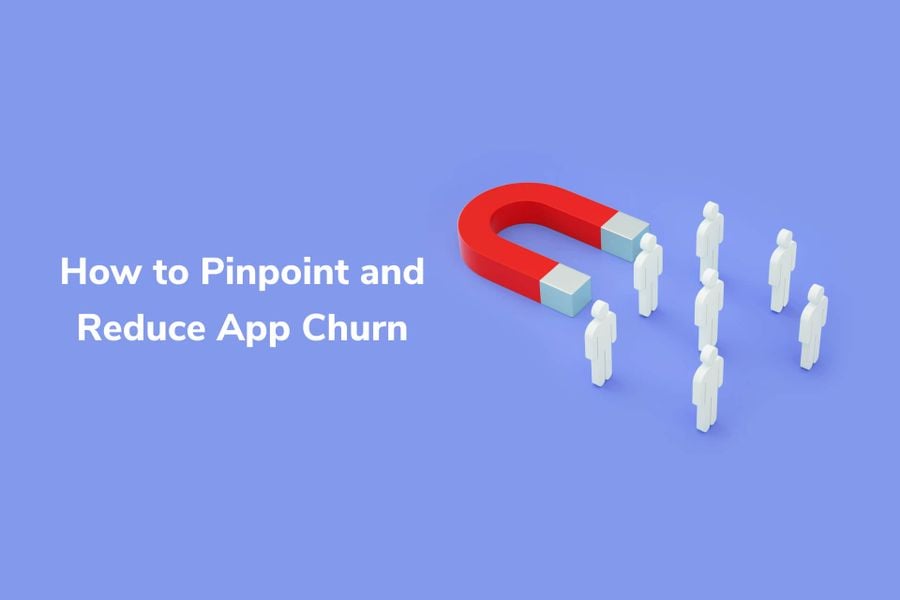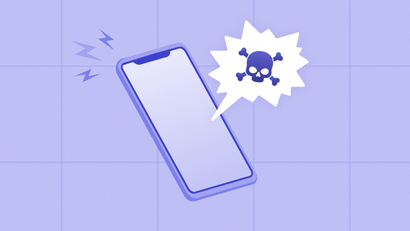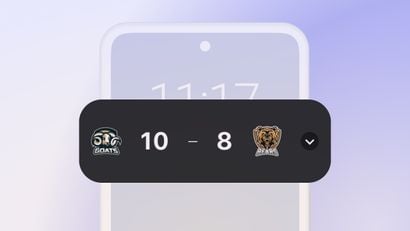What is User Churn?
Users “churn” when they abandon your app. This can mean one of a couple things. Either the given user has stopped opening your app and is no longer registering sessions, or they’ve uninstalled your app completely.
Churn and retention are opposite sides of the same coin. Every mobile app team should be looking to maximize user retention and minimize user churn.
App marketers and developers alike should understand and regularly assess churn rate in order to identify and solve friction points in the app experience.
Realistically, not every user who downloads your app will stay. Everyone’s different, and your offering simply won’t fulfill every user’s distinct wants, needs, and expectations.
Although some level of user churn is inevitable, you’ll want to keep a sharp eye on your churn rate and deploy strategies to minimize churn rate as much as possible.
Why Should You Care?
The math is simple. In order for your app to see growth in its userbase, you’ll need for your number of retained users to be higher than your number of churned users.
How to Calculate App Churn Rate
Your app churn rate is the rate at which users leave your app over a given period of time.
For example, mobile apps typically benchmark churn rate at the one day, seven day, 30 day, and monthly marks.

As a formula, your churn rate is expressed as the difference between your total number of users at the beginning of a given time interval and the number of users at the end of the time interval, divided by the total number of users at the beginning of the interval.
If you want to be precise in your churn analysis and have the available data, you can additionally calculate churn for given segments of your userbase, such as your teen users (ages 13-19), your Latin American users, etcetera.
User Statistics
If you’re not concerned about minimizing churn, you should be. Just take a look at the following statistics:
- In 2019, only 32 percent of users returned to an app 11 times or more.
- Retention rates tend to drop around the 7 and 30-day marks.
- Average App User Churn Over 3 Months is 72.76 percent.
- Reducing churn by only 5 percent can increase profitability by 75 percent.
What Does a High Churn Rate Mean?
The exact cause of an elevated churn rate can be hard to pinpoint because there are a number of reasons users may be disengaging from your app experience. Here are a few common scenarios:
- You’re focusing too heavily on your acquisition strategy.
- You're not conveying your value prop in a convincing way.
- You have friction in your user experience.
- You’re driving users away with aggressive marketing tactics.
How do I Know if my App Churn is Too High?
You’ll want to benchmark your churn rate relative to your app vertical and your users’ geographic region or regions. Users’ behavior around your app will differ widely depending on whether you’re a utility, a game, a dating app, etc. and where your users are located.
If you look at the averages, you’ll notice that some industries, such as gaming and eCommerce, tend to have higher average churn rates.
On the flip side, average churn in an industry like Finance, for example, is much lower.
How to Identify Points of Friction Within Your User Journey
If you’re experiencing an elevated churn rate, you’ll want to assess the root cause(s) by identifying friction points within your user journey. To do so, you can take these steps:
Examine Your User Data
To diagnose the root cause of your churn issue, start by mapping your user data. Look at your retention cohorts for the first week, month, and 90 day marks to understand trends in uninstalls.
Identify Peaks in Uninstalls
Visualizing your uninstall data allows you to understand moments when users are churning. Identify peaks in your data to see where your users are disengaging. Figure out what’s happening at these moments. Are users encountering a bug in your gaming app? Are they getting frustrated because they can’t access your core functionality? Or are they simply forgetting your app is there because you haven’t prompted them to reengage?
Assess Your Communication Strategy
How often are you communicating with your user base? What channels are you leveraging to do so? To reduce churn, you need to keep relationships with your users alive. To do so, you’ll want to optimize your mobile communication strategy by sending them relevant messages at the right times. As a starting point, assess how you’re you’re messaging users across your app’s touchpoint, and whether or not these communications are working to reengage and retain them.
Channels you can use to reengage users include push notifications, in-app messages, email, and SMS.
Strategies to Reduce Churn & Improve App Engagement
1. Showcase Your Value Prop
The numbers don’t lie. 80 percent of users will churn only one day after installing your app, and data shows that users tend to try an App for a week before deciding to keep or remove it. This gives you a short and critical window to showcase your app’s core value prop.
2. Make Onboarding Seamless
To increase the chances that users get hooked on your app, you’ll want to make sure that your onboarding process is as streamlined as possible. Different onboarding strategies will be right for different apps, but the general idea is to make it easy for users to understand how to use your app and where its value lies.
You can use function-oriented onboarding, for instance, to teach users how to use certain app features. Within a functional onboarding flow, In-App Messages are an excellent way of showcasing new features in an intuitive way.
You can use a single IAM or a slide carousel to take users through your key features. You can also take them on a guided app “tour,” where onboarding text appears within the app interface to lead users through different menu items. The goal here is to minimize friction in feature adoption.
3. Reduce Interaction Costs
Interaction cost is the effort users exert in accomplishing their goal on your platform. This concept is important in app development and marketing alike.
Similar to efficient onboarding, lowering your app’s interaction cost can help you minimize churn. Humans are lazy creatures, and we don’t appreciate dealing with bugs, long loading times, and confusing UI. Minimizing these delays will decrease the chances that users churn.
4. Personalize the App Experience
We’re living in a moment where user attention spans are at their shortest and user expectations are at their highest.
Personalizing your app experience helps you better meet your users’ needs and retain them for longer, thus reducing churn. You can achieve personalization by segmenting your user base and delivering these different cohorts the most relevant content, features, and communications.
For example, let’s say you’re a global eCommerce app and you’re running offers on footwear in the month of June. Before showcasing a deal on flip flops to all your users, you’ll want to break them into geographic segments. The last thing you want is for your users in the Southern Hemisphere seeing a deal on summer footwear while they’re still in the thick of winter.
5. Communicate Frequently to Re-engage
Just like human-to-human relationships, building a relationship between your app and your audience takes time and effort.
You can reengage your users with a variety of communication channels such as push notifications, in app messages, email, and SMS. Push notifications are a top choice for most apps because they give you a direct line for contacting your users, as these messages appear front and center on their lock screens—even when your app isn’t running.
In communicating with your users via one or more of these channels, make sure your messages give them a clear reason, or call to action (CTA) to reopen your app.
If you’re a banking app, you might remind users it’s time to check their monthly balance. If you’re a dating app, you might inform users that a match is waiting for them on your platform.
Devising Retention Strategies to Improve App Engagement
Decreasing churn and increasing retention go hand in hand. To learn more, check out the following article.
Read: App Retention Strategies to Improve Engagement



